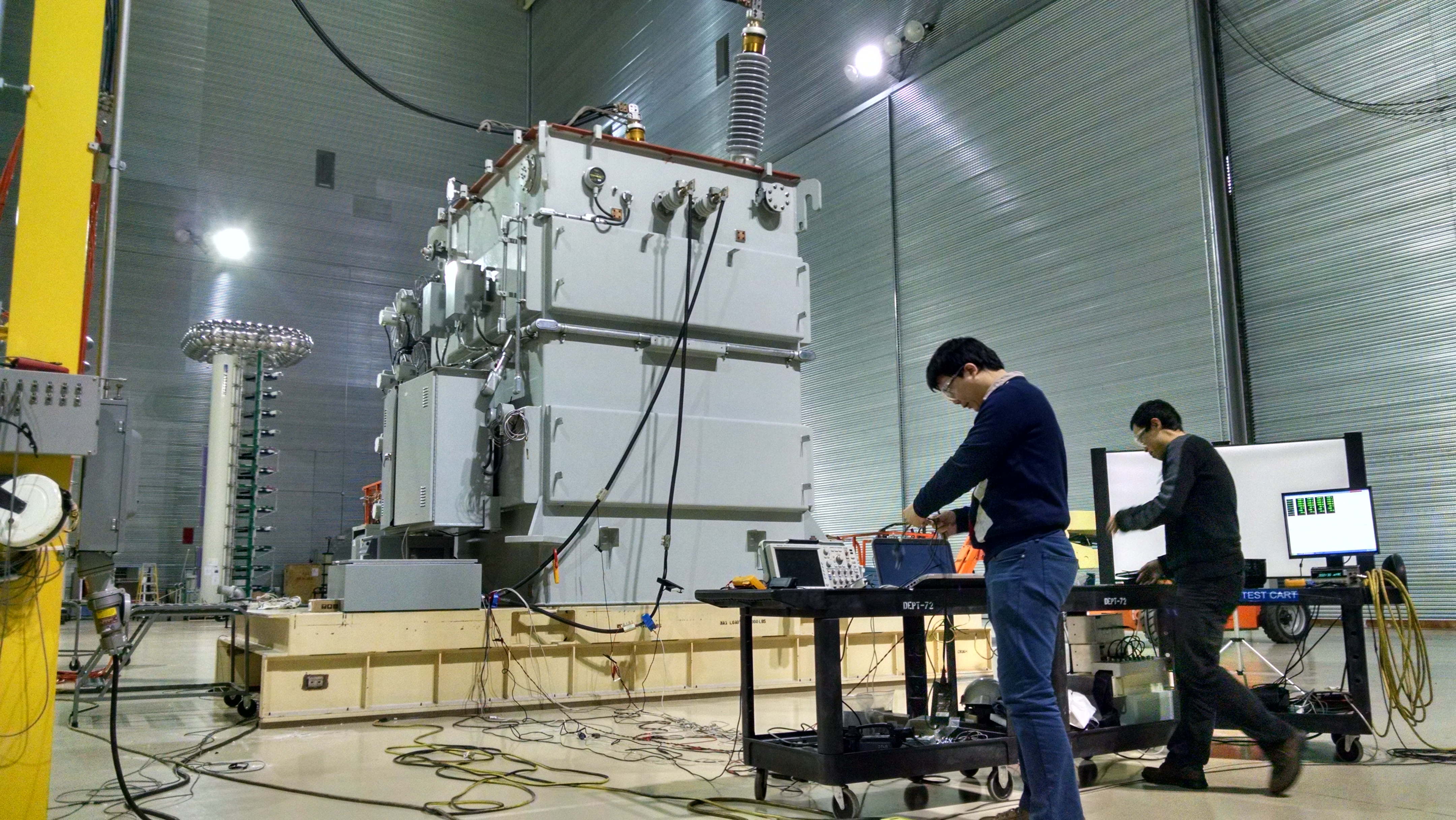Utility Applications
Overview
With the worldwide interest in renewable energy resources and increasing demand for power quality in distribution systems, the applications of power electronics in utility are growing rapidly over the past decades. These intermittent energy sources (e.g. solar and wind) highlight the need for power electronics, which are capable of mitigating power fluctuations and coordinating multiple sources through energy conversion and control. Moreover, high voltage dc (HVDC) technology has been playing an important role in energy transmission and distribution. Using ac/dc and dc/ac power electronics converters, together with underground/submarine dc cables, HVDC system can interconnect two asynchronous ac systems, achieve a better use of right-of-way, and provide a more economic solution for the long distance bulk energy transmission such as remote large-scale offshore windfarm applications. Furthermore, high controllability enables power electronics additional ancillary services, including grid stability enhancement and power quality improvement. The fast growth of power demand and distributed energy generation makes power electronics play a critical role in the future utility applications and serve as a key interface for grid integration.
Role of Power Electronics
Traditionally, power networks were built with the main components of electric transmission and distribution lines, generators, transformers, switchgears, inductors or reactors, and capacitor banks. However, limited by their weak control capability and/or relatively slow dynamic response, grid networks may be subject to poor stability and power quality, especially in notoriously overloaded power systems.
In contrast, semiconductor devices based power electronics can achieve higher power handling capability, thus providing a much more flexible controllability. Featuring these capabilities, power electronics have gained ground in utility applications since their advent in the 1950s. Nowadays, they have become increasingly popular for electric energy transfer and control, and will take a more important role in the future grid with the continuous innovation of power electronic technologies.
The utility applications of power electronics can be categorized into mainly four groups [1]:
- Energy Generation, including renewable energy resources (solar, wind, etc.), fuel cells and micro-turbines, storage systems (e.g. batteries, flywheels, and superconducting magnetic energy storage)
- Energy Transmission and Distribution, including high voltage dc (HVDC) transmission, and flexible ac transmission (FACTS)
- Energy Consumption, including adjustable speed motor drives, chargers for electric vehicles, various power supplies for computers and other electronic loads
- Power Quality Solutions, including uninterruptible power supplies (UPS), active power filters (APF) and dynamic voltage restorers (DVR)
In a very broad sense, power electronics could replace the main components in the traditional ac systems. For example, high frequency solid state transformer substitutes bulky fundamental frequency transformer; solid state breaker (switching in microseconds) substitutes traditional mechanical breaker and/or switchgear (switching in milliseconds);static compensator (STATCOM) substitutes capacitor bank for smoother reactive power support, etc. [2]. Power electronic technology will facilitate the modernization of future grid with higher intelligence, faster dynamic response, more promising efficiency and higher power density, etc.
How WBG Can Help
Compared to the Si counterparts, WBG devices featuring faster switching speed, higher voltage rating and lower power losses, enable more flexible controllability, less complex thermal management system, and smaller volume and size, etc., for future utility applications [3][5].
For medium and high voltage applications, typically semiconductor series connection techniques or various multilevel topologies are adopted due to limited voltage ratings of Si devices, when step-up transformer is eliminated for space saving and better efficiency. Both methods suffer from implementation difficulties in either converter or control design. Using WBG devices, these barriers could be overcome since conventional two level converters (more mature and easy to implement) can still be applied [6][7].
Furthermore, the fast switching capability of WBG devices can be utilized for harmonics compensation and oscillation damping, and thus no extra power quality improvement power electronics is needed. In addition, because of their high switching frequency, WBG devices based converters can behave more like ideal voltage and current sources, which improve the overall system stability.
Research Projects at UTK
- High voltage direct current (HVDC) transmission
- A Smart and Flexible Microgrid with a Low-cost Scalable Open-source Controller
- DC Controller for Continuously Variable Series Reactors (CVSRs)
- Reducing Levelized Cost of Energy (LCOE) of Residential PV Inverters Through Dynamic Hardware Allocation
- 20-kV Insulated Auxiliary Power Supply for Medium Voltage Converter
- Aging Effect Analysis of Reactive Power Generation for PV Inverter
- Voltage Regulation in Distribution System with High Penetration of Residential Solar Energy
- Inverter Design Considering Grid Conditions
- Agent Development for Enabling Reactive Power Support of Non-Utility DERs by Integrating Transactive Energy Approach.
